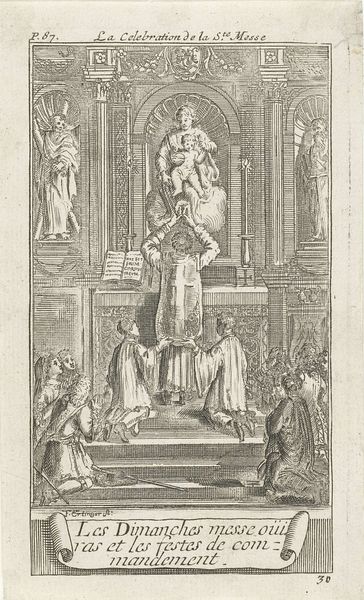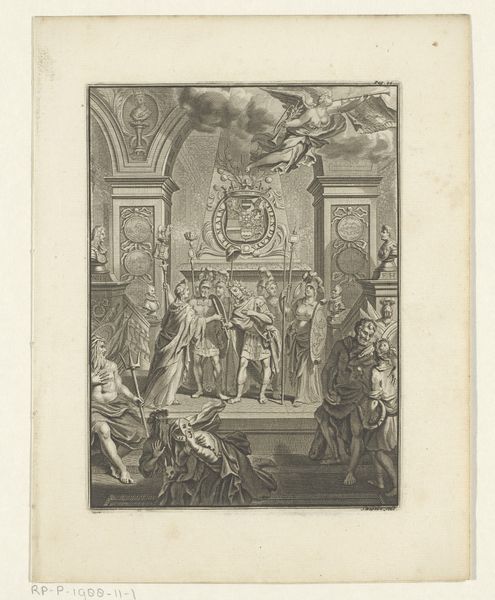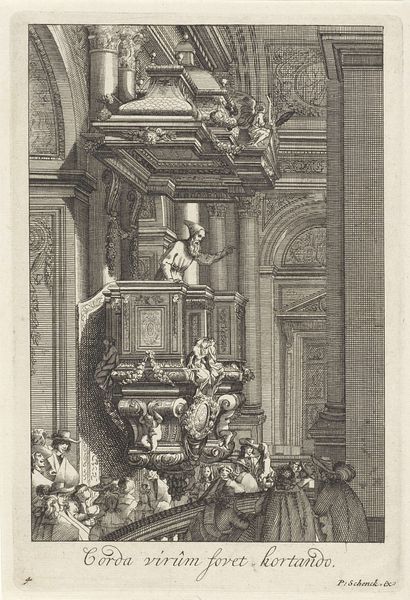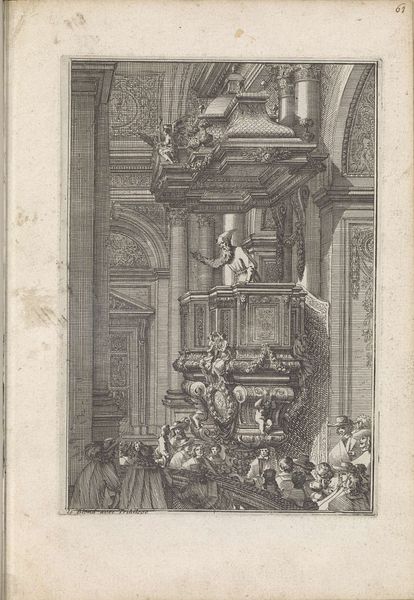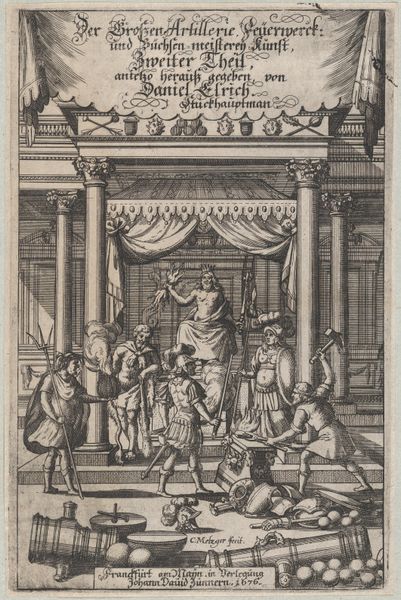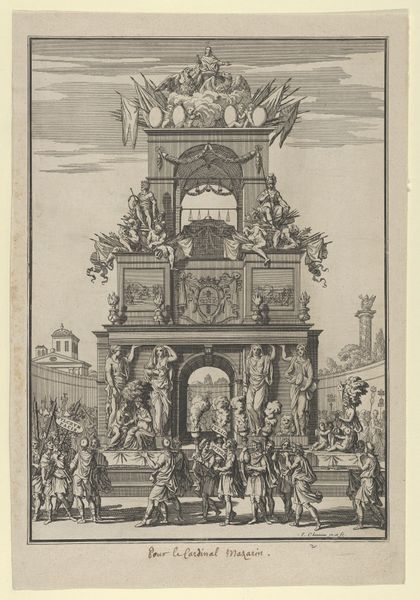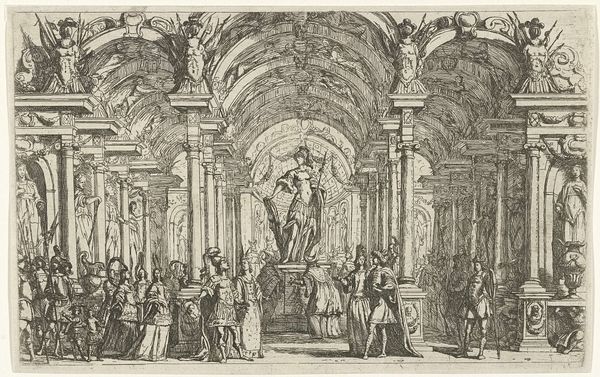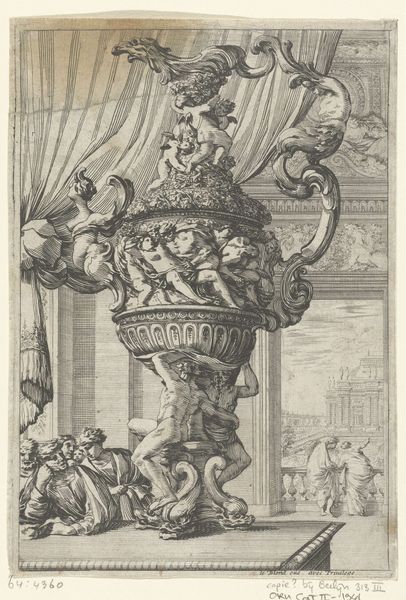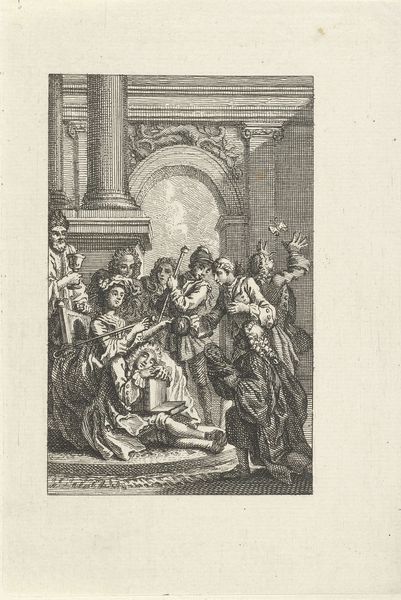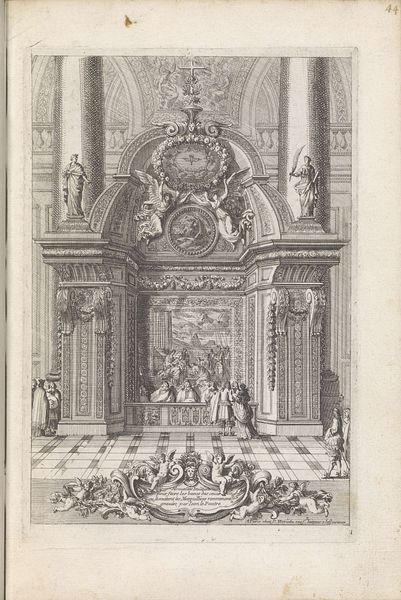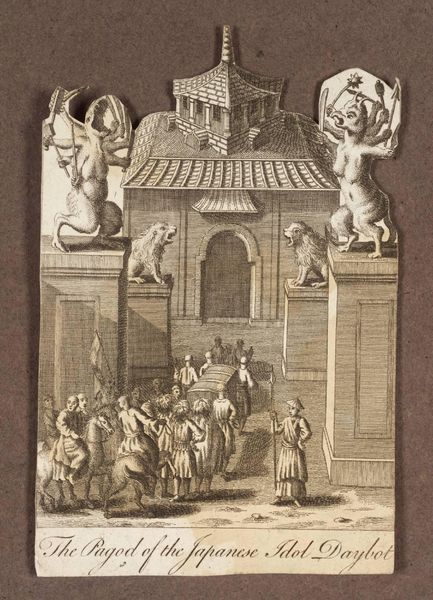
#
aged paper
#
toned paper
#
personal sketchbook
#
pen-ink sketch
#
pen work
#
sketchbook drawing
#
watercolour illustration
#
sketchbook art
#
pencil art
#
watercolor
Dimensions: height 147 mm, width 86 mm
Copyright: Rijks Museum: Open Domain
Editor: Here we have Jan Goeree's "People Standing Before a Statue," created sometime between 1680 and 1731. It's a pen and ink and watercolor sketch on toned paper, currently held at the Rijksmuseum. It gives me a very classical, almost theatrical feel, like figures frozen in a tableau. What do you see in this piece? Curator: I see a meticulously constructed symbolic space, teeming with allegorical weight. Look at how the artist layers classical figures, statues, and even what appears to be a frieze of Roman emperors. The very act of depicting people observing a statue…what could that suggest about our relationship to cultural memory and the creation of heroes? What purpose do you think the theatrical arrangement is playing? Editor: Maybe it's highlighting the act of interpretation itself? Like, we're all spectators in the theater of history, constantly interpreting symbols? Curator: Precisely! Notice, also, the repetition of the wreath motif—crowning the large statue, adorning the smaller figures below. Wreaths traditionally signify victory or honor. How might that influence our understanding of what Goeree is trying to convey about power and remembrance? And, by the way, note the almost ghostly skulls used decoratively... what do you think of that decision? Editor: A memento mori, maybe? A reminder that even heroes and empires fade? That sense of fleetingness contrasted with the apparent permanence of stone is interesting. Curator: A keen observation. Considering the period in which Goeree worked, think of the weight of the classical tradition, the desire to emulate and even surpass the ancients. Do you notice how Goeree depicts all the objects related to warfare? Editor: Yes, it's fascinating how Goeree is weaving together themes of mortality, power, and artistic legacy. I hadn’t picked up on all of the layers of meaning before. Curator: Indeed. This drawing acts as a window into the 18th-century mind and teaches how images operate over time and how they evolve into their subsequent emotional, cultural and psychological interpretation.
Comments
No comments
Be the first to comment and join the conversation on the ultimate creative platform.
